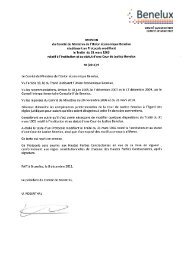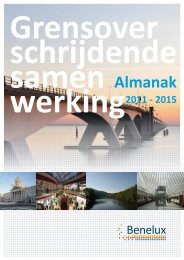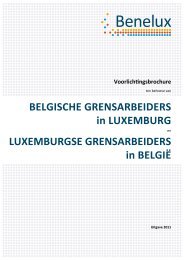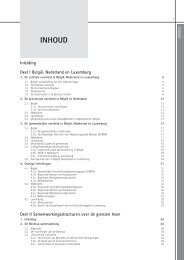The North Seas Countries' Offshore Grid Initiative - Initial ... - Benelux
The North Seas Countries' Offshore Grid Initiative - Initial ... - Benelux
The North Seas Countries' Offshore Grid Initiative - Initial ... - Benelux
Create successful ePaper yourself
Turn your PDF publications into a flip-book with our unique Google optimized e-Paper software.
<strong>The</strong>re is a large increase in gross exports for France, Ireland, Netherlands and<br />
especially Germany. <strong>The</strong>se are countries that have large amounts of cheaper<br />
generation such as hard coal, lignite, nuclear and wind generation, which the<br />
additional interconnections allow to be exported. For example, Germany has large<br />
amounts of hard coal and lignite generation. In the case of Ireland, the increase in<br />
gross exports is from wind generation that was previously curtailed but which can<br />
now be exported.<br />
As for the export balance, Great Britain, Belgium and to a lesser extent Ireland<br />
have the biggest increases in net imports, while Germany, France and the<br />
Netherlands see the largest increases in net exports.<br />
5.1.4.5 CO2 Emissions<br />
Figure 5-15 shows the changes in the CO emissions at each market node as a result of<br />
2<br />
the additional interconnections in the 2030 radial and meshed grid expansions strategies.<br />
As previously mentioned, the fuel and CO emission prices employed in the study result in<br />
2<br />
hard coal and lignite generators generally being cheaper than gas generators. <strong>The</strong><br />
additional interconnection capacity in the 2030 grid design facilitates better utilisation of<br />
cheaper generating resources, including the coal and lignite fired generators.<br />
Consequently there is an increase in the CO emissions of countries with significant coal<br />
2<br />
generation such as Germany and the Netherlands. This increase is offset by a decrease in<br />
CO emissions mainly in Belgium, Great Britain and Ireland. <strong>The</strong>re is very little change in<br />
2<br />
CO emissions for the NSCOGI region as a whole. This is mainly caused by the decrease of<br />
2<br />
the net export of the region as a whole.<br />
Figure 5-15 Difference in the CO emissions by NSCOGI country for the Reference Scenario in 2030,<br />
2<br />
between the <strong>Grid</strong>2030 Radial case and the <strong>Grid</strong>2020 case, and between the <strong>Grid</strong>2030 Meshed case and the<br />
<strong>Grid</strong>2020 case<br />
Page 49 of 142










